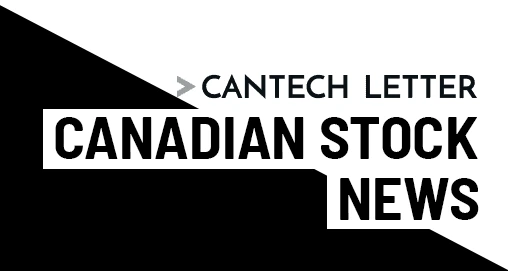
Shares of Ottawa’s MOSAID have been on a tear since mid 2010, moving from $18.30 on June 8th to over $30 at that year’s end. Revenue and profit for MOSAID has steadily climbed since the company stopped manufacturing products and began to vigorously defend the stable of intellectual property. MOSAID formed in 1975 and for a time was best known for its key circuit technology, an innovation used in the memory of most of the world’s computers. The Company now has an extensive portfolio of significant semiconductor IP among its more than two thousand patents to defend. MOSAID is one of our 10 Canadian Tech Stocks to Watch in 2011, so we caught up with the company’s President and CEO John Lindgren.
John, for those who aren’t familiar with MOSAID, can you give us a bit of background?
MOSAID was one of the original high tech companies in Silicon Valley North. It was founded in Ottawa in 1975 as an engineering services firm that specialized in designing DRAM (Dynamic Random Access Memory) chips for third-parties, and MOSAID was also the Canadian pioneer in the field of “reverse engineering,” which involves taking apart a semiconductor device and analyzing how it operates. The name MOSAID stands for “assistance in the design” of Metal Oxide Semiconductors – that’s about as techy as they come!
As part of the company’s contract work, MOSAID engineers invented DRAM circuit technology that was so fundamental that eventually it was designed into virtually all commodity DRAM, which is the main type of memory used in computers. One of the smartest things the company did was to file and maintain patents on its inventions, so in an important way MOSAID controlled its own future.
In 1982, MOSAID began manufacturing and designing memory test systems that were used by engineers to test prototype memory chips. Within a decade, MOSAID test equipment was in use in R&D labs around the world.
MOSAID did an IPO on the Toronto Stock Exchange in 1993, and in the late 1990s, began licensing its growing portfolio of DRAM patents. By then, MOSAID’s DRAM inventions were in widespread use, and the Company was determined to protect its intellectual property rights by negotiating patent licensing agreements – and that opened up an important new source of revenue.
There were also missteps. In 1999, the company made an ill-timed foray into the fabless semiconductor business, focusing on network-on-a-chip technology, but shut the division in 2003 after the tech crash.
By 2006, MOSAID was in three businesses – patent licensing, memory test equipment manufacturing, and semiconductor IP design. A proxy contest in the fall of 2006 resulted in an activist shareholder gaining three seats on the Board. Following a strategic review, the decision was taken to focus on patent licensing, which by then was driving both revenue growth and profits. In 2007, MOSAID shed its non-core memory test equipment and IP design assets, and implemented a new strategic focus on patent licensing and innovation.
MOSAID now has a stable of more than 2,300 patents, where do you feel the company’s core strengths lie?
Our portfolio is very strong in terms of memory patents – DRAM and Flash – as well as Wi-Fi, Power over Ethernet, and microcomponents patents. Beyond that, MOSAID’s core strength is the ability to monetize its patent portfolio. We’re been doing this successfully since 1999, and over time we’ve developed a proven operating model that involves building our patent portfolio, managing our patents, and monetizing the portfolio. From 2005 to 2010, MOSAID posted a revenue CAGR (compound annual growth rate) of 22%, and pro forma net income CAGR of 35%.
We build our patent portfolio three ways: by acquiring patents from others, by filing patents on the company’s own inventions, and by obtaining exclusive licensing rights to patents owned by others.
Managing our patent portfolio is a critical structural element for long-term success. The management of the patents – technically it’s called “patent prosecution” – is done using a combination of in-house and external experts. It’s time-consuming, complex and expensive to properly maintain patents in patent offices around the world, and if not done correctly, can seriously jeopardize both the technical validity and potential monetary value of your patents.
The most visible part of MOSAID’s business is licensing our patents to companies around the world. We have several licensing teams that are constantly on the road. The process involves identifying potential licensees, documenting infringement, and negotiating patent licensing agreements. If necessary, we will resort to litigation to defend our intellectual property rights.
Even though MOSAID spends its fair share of time in the courtroom, your cases don’t seem to drag on forever. Why do you think this is?
One thing we’ve learned is never to predict timelines when you go to court, as these matters are at least partly beyond one’s control. Once litigation has begun, we remain open to reaching a fair and reasonable settlement, but we also remain committed to see the case through to verdict if need be.
The length of time it takes to reach a settlement varies a great deal. We had one case in 2005 that settled within a month and others that lasted more than three years. Most recently, we settled our patent infringement case against IBM. The case began in July 2009 and successfully settled 17 months later, in December 2010 – that was fairly quick.
Your litigation expenses, as a percentage of revenue, are quite low compared to companies with similar business models…
MOSAID’s litigation expenses have been unusually low during the several years primarily because of court delays, and the fact that we are currently involved in a small number of cases. These litigation savings have flowed straight to the bottom line, but we have been very clear in telling investors that we expect patent litigation expenses to increase in the near-term as these expenses revert to “normal” levels. In fact, we tell the Street to expect annual litigation expenses of between $5 million and $10 million.
Can you give us some insight into a typical negotiation process with a multinational firm? It seems MOSAID comes away with a lot of licensing agreements, but the threat of legal action is always present. Are these negotiations tense affairs or is this just par for the course stuff for such large companies?
Patent licensing negotiations typically follow a defined path, consisting of technical discussions followed by business and contract negotiations. First, we open communications with a company that we believe is practicing our patents. We do our homework well in advance of such communications, having analyzed the company’s products and having built a “claim chart” proving their infringement of our patents. We then invite them to take a license. What follows are technical meetings between the engineers and patent experts on each side. Basically, they may argue that their products don’t practice MOSAID’s patented technology, and we argue that they do. We usually assert a number of different patents and accordingly, the technical phase can take months to complete.
Once the other party recognizes they require a license to our patents, negotiations enter the business phase, during which the terms and conditions of the license are discussed, including financial consideration. Finally, the contract terms and conditions language are negotiated.
It often takes more than a year to reach a negotiated settlement, and I’d characterize most negotiations as tough but fair.
Can you tell us a bit about MOSAID’s operational structure? You have very few employees for instance, and have many on the road…
For a company that’s guiding to annual revenues in fiscal 2011 of $77.0 million to $80.0 million, we’re fairly lean with just 50 employees, all at our head office in Ottawa. We were in fact ranked #1 in Canada recently among all public companies for revenues per employee. The skills sets are technology, patent licensing and patent prosecution, R&D, finance and corporate, legal and market analysis. Most people assume that a patent licensing firm such as MOSAID is heavy with lawyers, but we only have four, including myself and our General Counsel.
We have three main groups. The Intellectual Property group has 27 people, performing the functions of patent licensing, patent management, and patent acquisitions. This includes the licensing teams who spend so much time traveling to do our deals.
Our Research and Development team has eight engineers. Their current focus is on developing a new architecture and interface technology for NAND Flash memory. We call our solution HLNAND™, for HyperLink NAND, and their work in this area has generated over 380 patent applications over the last four years.
The Corporate group has 13 people, and encompasses executives, finance, legal, HR, information services and investor relations. They provide the corporate services necessary for a publicly traded company, and also play vital roles in day-to-day operations.
MOSAID has returned a very healthy dividend since 2005. Could you foresee a time when you might cut that dividend to put more money back into the business, to acquire a suite of patents, for instance?
MOSAID began paying dividends in 2005, and has paid its shareholders $0.25 per share per quarter consistently since mid-2006, with a current yield of just over 3%. The company returns over $11 million annually to shareholders, and enjoys very strong cash flow from operations before changes in working capital. This item was $38.0 million during fiscal 2010, and was $20.9 million in the first half of fiscal 2011. Cash and marketable securities at the end of the first half of fiscal 2011, which ends on April 30, 2011, was $110.0 million. As you can see, we have a very strong balance sheet, and we are well able to both invest in the business and return cash consistently to our shareholders. In fact, through a combination of share repurchases and dividends, we have returned $95 million to our shareholders since 2006.
You just signed your first wireless patent license agreement with a semiconductor vendor. Should we expect to see more of these in 2011?
We expect to sign more wireless patent license agreements during fiscal 2011, and those deals could be with companies that manufacture Wi-Fi chips or with system vendors – companies that use Wi-Fi chips in their end products.
MOSAID acquired its wireless patent portfolio in 2007 and since then we’ve signed 15 wireless licensing agreements, making this an excellent investment that has already generated license agreements that will bring in substantially more than $100 million during the lives of those deals.
Additional images:
__________________________________________________________________________________
__________________________________________________________________________________
Leave a Reply
You must be logged in to post a comment.






 Share
Share Tweet
Tweet Share
Share




Comment